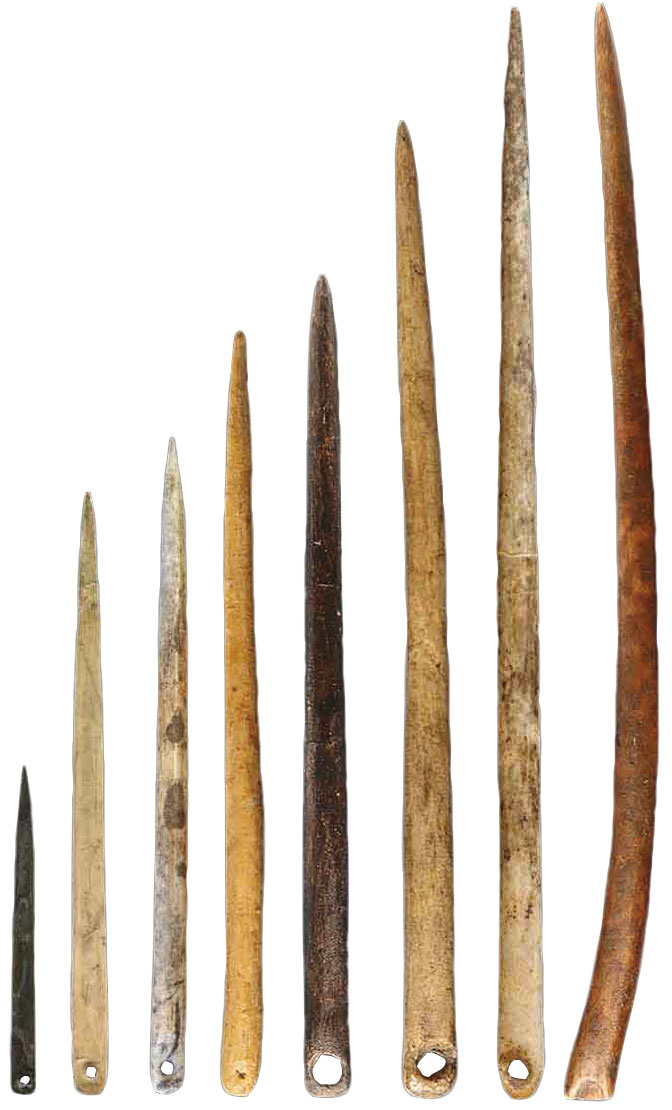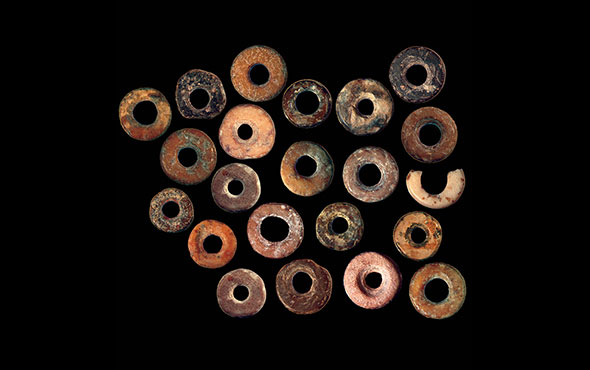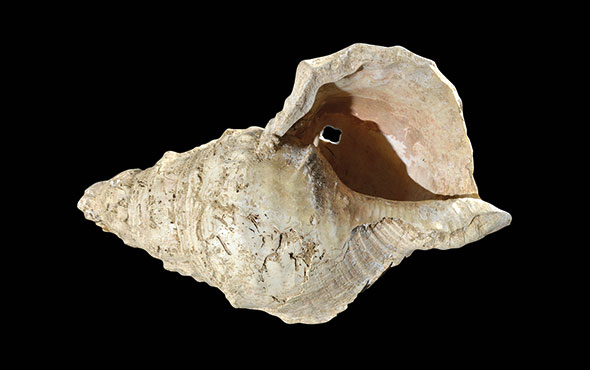
What is it?
Eyed needles
Culture
Upper Paleolithic
Date
Ca. 40,000 to 20,000 years ago
Material
Bone
Found
Eurasia
Dimensions
1 inch to 3 inches
Why do people wear clothes, and when did they start doing so? To answer this fundamental question, archaeologist Ian Gilligan of the University of Sydney went back to the beginning. “There’s little archaeological evidence of clothing, and certainly none from the Paleolithic period,” Gilligan says. “The only indirect evidence we have are artifacts used to make clothes, such as hide scrapers, awls, and eyed needles.” Traditionally, researchers have believed that people developed eyed needles about 40,000 years ago to facilitate the finer sewing required to fashion fitted or tailored clothing, explains Gilligan, whereas hide scrapers were used to make looser clothing. But it has recently become clear that starting around 80,000 years ago people began to use bone awls to make fitted garments, and Gilligan wanted to know why later people went to the trouble of making such delicate, highly labor-intensive tools as eyed needles.
The reason, he believes, was the weather. Eyed needles first begin to appear in the archaeological record in Siberia at the exact time when the climate swung wildly from warm and wet to very cold and dry in as little as a century, placing people under great stress. “The sudden need for multilayered protection from the cold may have put a premium on finer and more efficient sewing for an innermost layer—hence, the advent of eyed needles,” Gilligan says. “It basically comes down to making underwear.”
Eyed needles may also have been used to attach decorative beads and pierced shells—which appear in increasing numbers in the archaeological record beginning about 40,000 years ago—to clothing. “I think that what happened during the coldest phase of the last glacial cycle, and with the advent of fitted clothing that covers the body more fully, was that people couldn’t decorate their skin anymore because they needed to cover themselves completely and continuously,” says Gilligan. “Thus, the social functions of altering one’s appearance had to be transferred from decorating naked skin to clothes, and eyed needles were required to accomplish this kind of intricate sewing.”












